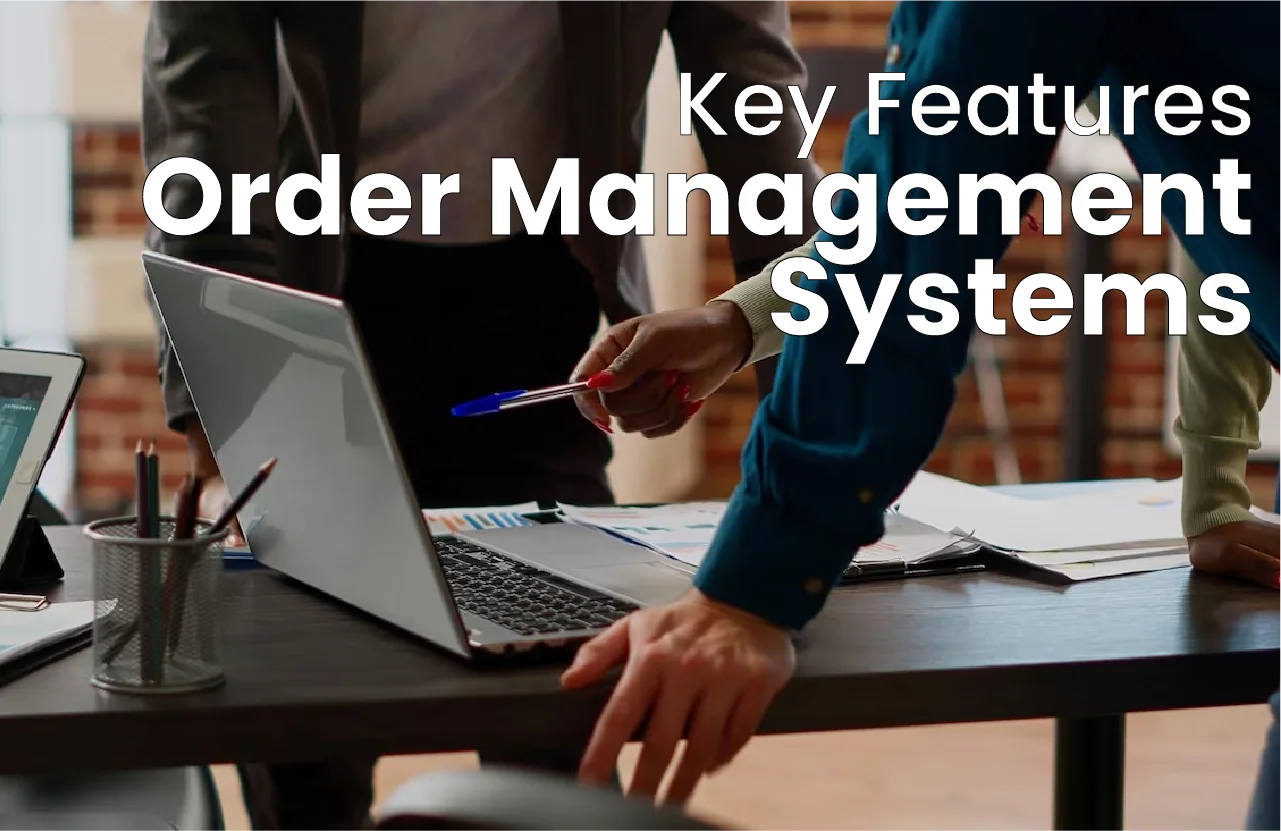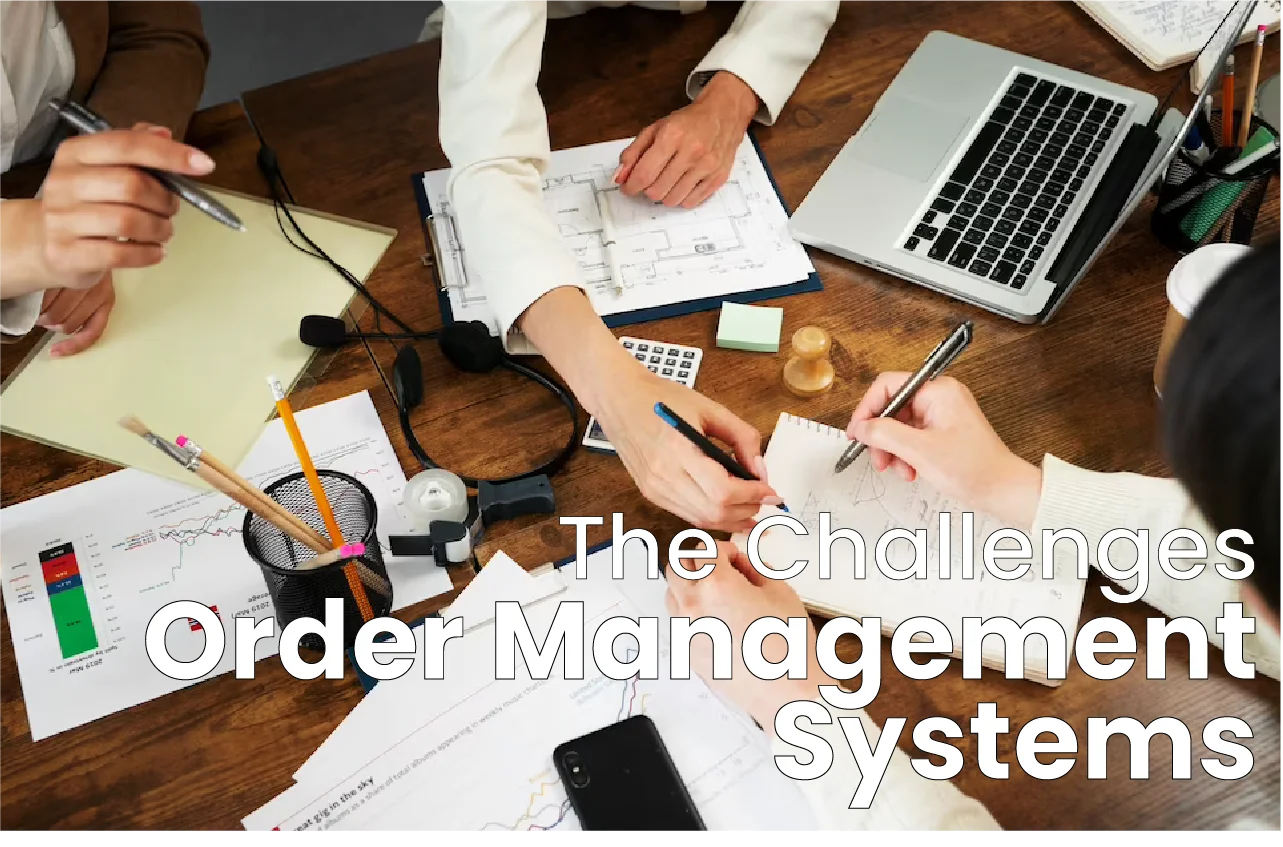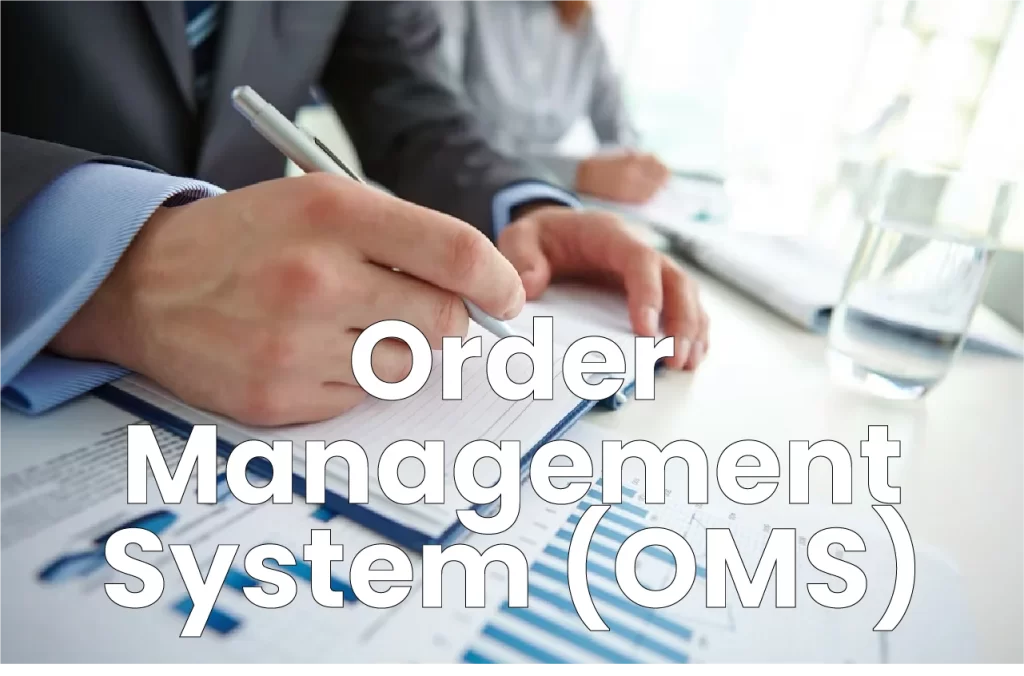An Order Management System (OMS) is a software application that enables businesses to efficiently manage and streamline their order processing operations. It serves as a centralized hub where businesses can receive, process, track, and fulfill customer orders. An OMS automates various tasks and provides real-time visibility into the entire order lifecycle, from order placement to delivery. This article will explore the key features and benefits of an Order Management System and highlight its importance in modern business operations.
An Order Management System (OMS) is a sophisticated software application that centralizes and automates the order processing workflow for businesses. It integrates with various systems and channels to receive, process, track, and fulfill customer orders efficiently. Here’s a breakdown of how an OMS works:
Order Capture
The OMS captures orders from multiple sales channels, such as e-commerce platforms, marketplaces, or point-of-sale systems. It collects all relevant order information, including customer details, product details, quantities, and shipping preferences.
Order Validation
The OMS performs order validation to ensure the accuracy and validity of the order. It checks for any errors or missing information and verifies if the ordered products are available in the inventory.
Inventory Management
The OMS connects with the inventory management system to check the availability of products. It updates inventory levels in real-time and reserves the ordered products to prevent overselling. If products are out of stock, the OMS may trigger notifications to inform customers or suggest alternative products.
Order Routing
Once the order is validated and the products are available, the OMS determines the most optimal fulfillment location based on inventory availability, proximity to the customer, and other predefined rules. It may route the order to a specific warehouse, distribution center, or dropship supplier.
Order Fulfillment
The OMS generates pick lists, packing slips, and shipping labels to facilitate the fulfillment process. It may integrate with warehouse management systems (WMS) or mobile devices to guide warehouse employees in picking and packing the ordered items accurately.
Shipping and Tracking
The OMS integrates with shipping carriers or third-party logistics providers to generate shipping labels and track shipments. It automatically updates the order status with tracking information, allowing customers to monitor their orders in real-time.
Customer Communication
The OMS facilitates communication with customers throughout the order process. It sends order confirmation emails, shipping notifications, and delivery updates to keep customers informed about the status of their orders.
Returns and Exchanges
In the case of returns or exchanges, the OMS manages the process by generating return labels, initiating refund or replacement orders, and updating inventory accordingly.
Reporting and Analytics
The OMS generates comprehensive reports and analytics on order volume, order status, inventory levels, customer behavior, and other key metrics. This data provides valuable insights for decision-making, process optimization, and identifying trends or opportunities.
Integration with Other Systems
The OMS integrates with other business systems, such as accounting software, customer relationship management (CRM), and enterprise resource planning (ERP) systems. This integration ensures seamless data flow and eliminates manual data entry.
Overall, an Order Management System streamlines and automates the entire order processing workflow, from order capture to fulfillment and post-sales support. It eliminates manual errors, improves operational efficiency, enhances customer satisfaction, and provides businesses with real-time visibility into their order operations. By centralizing and orchestrating order management tasks, an OMS empowers businesses to deliver a seamless and exceptional customer experience while optimizing their internal processes.
Read Also: What Does Logistics Mean?
Types of Order Management Systems

Order Management Systems (OMS) can vary based on the specific needs and requirements of different businesses. Here are some common types of Order Management Systems:
On-Premises Order Management System
This type of OMS is installed and hosted locally on the company’s servers. It requires hardware infrastructure and IT resources for maintenance and management. On-premises OMS provides businesses with greater control over data and customization options but may involve higher upfront costs.
Cloud-based Order Management System
Cloud-based OMS, also known as Software-as-a-Service (SaaS) OMS, is hosted in the cloud and accessed through a web browser. It eliminates the need for on-site infrastructure and allows businesses to pay for the software on a subscription basis. Cloud-based OMS offers scalability, easy accessibility, and automatic software updates.
Integrated Order Management System
Integrated OMS refers to a system that is tightly integrated with other business systems, such as inventory management, accounting, CRM, and e-commerce platforms. It enables seamless data synchronization across different systems, streamlines operations, and provides a holistic view of the business.
Standalone Order Management System
Standalone OMS is a standalone software application dedicated solely to order management. It may not have extensive integration capabilities but focuses on core order processing functionalities, such as order capture, inventory management, and fulfillment.
Enterprise Order Management System
Enterprise OMS is designed for large-scale businesses with complex order management requirements. It can handle high order volumes, multiple sales channels, and international operations. Enterprise OMS often includes advanced features like multi-warehouse management, advanced reporting and analytics, and configurable workflows.
Small Business Order Management System
Small Business OMS caters to the needs of small and medium-sized enterprises (SMEs) with relatively simpler order management needs. It provides essential order processing functionalities, inventory management, and basic reporting capabilities tailored to the scale and requirements of smaller businesses.
Custom-built Order Management System
Some businesses opt to develop custom-built OMS solutions tailored specifically to their unique requirements. Custom-built OMS allows businesses to have complete control over the features, workflows, and integrations based on their specific needs.
It’s important for businesses to evaluate their specific needs, scalability requirements, integration capabilities, and budget considerations when choosing an Order Management System. The chosen system should align with the company’s growth plans, support its sales channels, streamline operations, and enhance customer satisfaction.
Order Management Process

The order management process involves several steps to ensure smooth and efficient handling of customer orders. Here are the key steps typically involved in the order management process:
Order Placement
The process starts when a customer places an order, either through a sales channel like a website, mobile app, or directly with a sales representative. The order includes details such as product(s), quantity, shipping address, and any specific instructions or preferences.
Order Processing
Once an order is received, it needs to be processed within the order management system. This step involves verifying the order details, checking product availability, and determining pricing, discounts, and promotions if applicable. The order is then prepared for fulfillment.
Inventory Allocation
In this step, the order management system checks the inventory levels to ensure the availability of the ordered products. If the items are in stock, they are allocated to the specific order. If there is insufficient inventory, backordering or alternative fulfillment options may be considered.
Order Fulfillment
Once the inventory is allocated, the order moves into the fulfillment stage. This involves picking the items from the warehouse, packing them securely, and generating shipping labels or documentation. The order may be fulfilled from a central warehouse, distribution centers, or even drop-shipped directly from suppliers.
Shipping and Logistics
The packed order is handed over to the shipping carrier or logistics provider for transportation to the customer’s location. Tracking information is often provided to the customer for real-time visibility of the shipment.
Order Tracking and Updates
Throughout the process, customers may receive order status updates, shipping notifications, and tracking information to keep them informed about the progress of their order. This helps manage customer expectations and provides transparency.
Order Delivery and Receipt
The order is delivered to the customer’s designated location. Upon receipt, the customer may inspect the items for any damages or discrepancies. If there are issues, they may initiate returns or exchanges according to the company’s policies.
Order Billing and Payment
Once the order is successfully delivered, the billing process begins. Invoicing and payment collection take place, either through online payment gateways, invoicing systems, or other payment methods agreed upon between the customer and the company.
Order Documentation and Record-Keeping
It’s crucial to maintain accurate records of each order for future reference, customer service, and analysis. This includes order details, customer information, shipping documents, invoices, and any associated communication.
Order Management Analysis and Optimization
After the order is complete, businesses often analyze order data, key performance indicators (KPIs), and customer feedback to identify areas for improvement. This analysis helps optimize the order management process, enhance customer satisfaction, and drive operational efficiencies.
Key Features of an Order Management System

Order Processing
An OMS allows businesses to seamlessly process incoming orders from various sales channels, such as e-commerce platforms, marketplaces, and offline channels. It consolidates order information, verifies inventory availability, and initiates the fulfillment process.
Inventory Management
With an OMS, businesses can effectively manage their inventory by keeping track of stock levels, monitoring product availability, and synchronizing inventory across multiple locations. This ensures accurate order fulfillment and minimizes the risk of overselling or stockouts.
Order Tracking and Status Updates
An OMS provides real-time visibility into order status, allowing businesses and customers to track the progress of an order from placement to delivery. It enables automatic notifications and updates, reducing customer inquiries and enhancing transparency.
Customer Management
OMS enables businesses to maintain a comprehensive customer database, including contact information, order history, and preferences. This data helps businesses personalize customer interactions, provide better customer service, and build long-term customer relationships.
Integration Capabilities
An OMS integrates with various systems and applications, such as e-commerce platforms, payment gateways, shipping carriers, and ERP systems. This integration streamlines data flow, eliminates manual data entry, and reduces errors, enhancing overall operational efficiency.
Benefits of an Order Management System

Improved Order Accuracy
An OMS minimizes order errors and ensures accurate order processing by automating order entry, validation, and fulfillment processes. This leads to increased customer satisfaction and fewer returns or exchanges.
Efficient Order Fulfillment
With an OMS, businesses can optimize their order fulfillment processes, including picking, packing, and shipping. It enables intelligent order routing, inventory allocation, and shipping method selection, resulting in faster and more cost-effective order fulfillment.
Enhanced Inventory Visibility
An OMS provides real-time visibility into inventory levels across multiple locations, enabling businesses to manage inventory efficiently. It helps prevent stockouts, overstocks, and allows businesses to make data-driven decisions for inventory replenishment.
Streamlined Operations
By automating manual tasks and integrating various systems, an OMS streamlines order management processes, reduces administrative workload, and improves operational efficiency. This allows businesses to focus on core activities and scale their operations.
Scalability and Growth
An OMS is designed to handle high order volumes and can scale as a business grows. It provides the flexibility to accommodate increasing order volumes, new sales channels, and expanding product catalogs.
Data Insights and Reporting
An OMS generates comprehensive reports and analytics, providing businesses with valuable insights into sales trends, order patterns, customer behavior, and inventory performance. These insights help businesses make informed decisions, optimize operations, and drive growth.
Challenges of an Order Management System

While an order management system (OMS) offers numerous benefits, there are also challenges that organizations may encounter when implementing and using an OMS. These challenges can vary depending on the specific system and business requirements. Here are some common challenges associated with an order management system:
Complexity of Integration
Integrating an OMS with existing systems, such as enterprise resource planning (ERP) systems, customer relationship management (CRM) systems, and inventory management systems, can be complex. It requires careful planning, data mapping, and coordination between different departments or systems to ensure smooth integration.
Data Accuracy and Synchronization
Maintaining accurate and synchronized data across various systems is crucial for an OMS to function effectively. Inaccurate or outdated data can lead to order errors, inventory discrepancies, and delays in order processing. Regular data cleansing and synchronization efforts are necessary to ensure data integrity.
Scalability and Flexibility
As businesses grow and expand, their order management requirements may evolve. An OMS should be scalable and flexible enough to accommodate increasing order volumes, new sales channels, additional warehouses, and changing business processes. Ensuring that the OMS can adapt to future needs is essential.
Order Visibility and Tracking
Providing real-time order visibility and tracking information to customers is increasingly important. However, challenges may arise in ensuring accurate and up-to-date tracking information, especially when dealing with multiple shipping carriers or cross-border shipments. Integration with shipping and logistics systems is crucial to address this challenge.
Order Customization and Personalization
Some businesses may offer customizable products or personalized services, which can add complexity to the order management process. Managing different product configurations, pricing options, and customer preferences within the OMS requires robust customization capabilities and careful configuration management.
Returns and Order Modifications
Handling returns, order cancellations, modifications, and exchanges can be challenging within an OMS. The system needs to support efficient processing of these requests, including issuing return authorizations, tracking return shipments, managing refunds or credits, and updating inventory accurately.
Training and User Adoption
Implementing a new order management system often requires training employees on how to use the system effectively. Ensuring user adoption and overcoming resistance to change can be a challenge, particularly in organizations with a large workforce or diverse skill sets. Adequate training and ongoing support are necessary to maximize the system’s benefits.
Performance and Reliability
An OMS should perform efficiently and reliably, even during peak order periods. System downtime or slow response times can have a significant impact on order processing and customer satisfaction. Implementing measures like system monitoring, load balancing, and redundancy can help address these challenges.
Cost and Return on Investment (ROI)
Implementing and maintaining an OMS involves costs, including software licensing fees, integration expenses, infrastructure requirements, and ongoing support. Calculating the return on investment and justifying the cost of the system is essential. It requires evaluating the benefits gained, such as improved order accuracy, faster order processing, reduced operational costs, and enhanced customer satisfaction.
Overcoming these challenges requires careful planning, selecting the right OMS for the business needs, effective change management, ongoing system monitoring and optimization, and continuous improvement efforts. With the right strategies and solutions in place, organizations can successfully leverage an order management system to streamline operations, enhance customer experiences, and drive business growth.
Why Do Online Sellers Need an Order Management System?

Online sellers need an Order Management System (OMS) to efficiently and effectively manage their sales operations and meet the demands of today’s competitive e-commerce landscape. Here are several reasons why an OMS is crucial for online sellers:
Centralized Order Processing
An OMS serves as a central hub for order processing, consolidating orders from multiple sales channels (e.g., website, marketplace platforms, social media) into a single system. This centralization streamlines the order management process, eliminates manual data entry errors, and ensures consistent and accurate order fulfillment.
Inventory Management
Effective inventory management is essential for online sellers to avoid overselling, stockouts, and order fulfillment issues. An OMS provides real-time visibility into inventory levels, allowing sellers to track stock across various warehouses or fulfillment locations. This helps prevent overselling and enables proactive inventory replenishment to meet customer demand.
Order Tracking and Customer Communication
With an OMS, online sellers can provide their customers with order tracking information, including shipment status and delivery updates. This real-time visibility enhances the customer experience and reduces customer inquiries about order status. Automated email notifications and tracking links can be generated directly from the OMS, improving communication efficiency.
Streamlined Order Fulfillment
An OMS optimizes the order fulfillment process by automating key tasks such as order routing, picking, packing, and shipping label generation. This automation minimizes manual errors, reduces order processing time, and improves operational efficiency. By streamlining fulfillment operations, online sellers can handle a higher volume of orders without sacrificing accuracy or speed.
Integration with Sales Channels and Marketplaces
Online sellers often sell their products on multiple sales channels or marketplaces. An OMS integrates with these platforms, allowing for seamless order synchronization and inventory updates. This integration eliminates the need for manual data entry across different platforms and ensures accurate inventory management and order processing.
Analytics and Reporting
An OMS provides valuable insights through analytics and reporting features. Sellers can access data on sales performance, order volumes, customer trends, and inventory levels. This information enables informed decision-making, such as identifying popular products, assessing sales channel performance, and adjusting inventory levels to optimize profitability.
Efficient Returns Management
Dealing with product returns is a critical aspect of online selling. An OMS streamlines the returns management process by automating return authorizations, tracking return shipments, and managing refunds or exchanges. This improves customer satisfaction, reduces processing time, and allows for better inventory management.
Scalability and Growth
As an online business expands, managing increasing order volumes and diversifying sales channels becomes more challenging. An OMS provides the scalability and flexibility needed to accommodate growth. It can handle larger order volumes, integrate with additional sales channels, and support multiple warehouses or fulfillment centers, ensuring smooth operations as the business expands.
Enhanced Customer Experience
A well-implemented OMS helps online sellers deliver an exceptional customer experience. By ensuring accurate and timely order fulfillment, order tracking transparency, and efficient returns management, sellers can build trust and loyalty with their customers. A positive customer experience leads to repeat purchases, positive reviews, and word-of-mouth recommendations.
How to Choose the Right Order Management System

Choosing the right Order Management System (OMS) is a crucial decision for online sellers. Here are some key factors to consider when selecting an OMS that suits your business needs:
Integration Capabilities
Look for an OMS that seamlessly integrates with your existing e-commerce platforms, marketplaces, and other systems such as inventory management, accounting, and shipping carriers. Compatibility and smooth data exchange between systems are essential to streamline operations and avoid manual data entry.
Scalability and Flexibility
Consider the scalability of the OMS to accommodate your business growth. Ensure that it can handle increasing order volumes, support multiple sales channels, and adapt to your evolving requirements. A flexible OMS allows for customization and configuration based on your specific business processes.
Order Processing Features
Evaluate the core order processing capabilities of the OMS. It should support essential functions like order entry, order routing, inventory management, order tracking, and automated notifications. Look for features that align with your specific business needs, such as batch order processing, split shipments, backorder management, and multi-location inventory support.
Inventory Management
Effective inventory management is critical for online sellers. Ensure that the OMS provides real-time visibility into inventory levels, supports inventory tracking across multiple locations, and enables proactive stock replenishment. It should also offer features like safety stock management, SKU-level tracking, and inventory forecasting to optimize inventory levels.
Reporting and Analytics
An OMS should provide comprehensive reporting and analytics capabilities. Look for features that allow you to monitor key performance indicators (KPIs) such as sales, order volumes, inventory turnover, and customer metrics. Customizable reports and dashboards help you gain insights into your business’s performance and make data-driven decisions.
Automation and Workflow Management
Consider the level of automation and workflow management offered by the OMS. It should automate routine tasks like order routing, order allocation, and shipping label generation. Workflow management features enable you to define and streamline your business processes, ensuring efficient order processing and minimizing errors.
Customer Experience Features
Assess the OMS’s customer experience features, such as order tracking, automated email notifications, and customer communication capabilities. The system should provide real-time order status updates, shipment tracking information, and customizable email templates to enhance the customer experience and reduce support inquiries.
Returns Management
A robust returns management module is essential for handling product returns efficiently. Look for features that automate the returns authorization process, track return shipments, manage refunds or exchanges, and provide comprehensive visibility into return trends and metrics.
Implementation and Support
Evaluate the implementation process and support provided by the OMS vendor. Consider factors such as setup time, data migration, training, and ongoing technical support. A responsive support team and access to documentation, tutorials, and user communities are valuable resources for troubleshooting and maximizing system utilization.
Cost and ROI
Consider the pricing structure of the OMS, including upfront costs, ongoing subscription fees, and any additional charges for integrations or customizations. Assess the return on investment (ROI) potential of the OMS by evaluating how it can improve operational efficiency, reduce errors, enhance customer satisfaction, and drive sales growth.
It’s also beneficial to seek recommendations from industry peers, read reviews and case studies, and request demonstrations or trials to assess the OMS’s usability and suitability for your business. Taking the time to evaluate your specific needs and align them with the features and capabilities of the OMS will help you choose the right system that can effectively support and optimize your order management processes.
Conclusion
Order Management System is a vital tool for businesses seeking to streamline their order processing operations, enhance customer satisfaction, and optimize inventory management. By automating order-related tasks, providing real-time visibility, and integrating with various systems, an OMS enables businesses to efficiently manage orders, improve operational efficiency, and drive growth in today’s competitive business landscape. Implementing an OMS is a strategic investment that empowers businesses to meet customer expectations, scale their operations, and stay ahead of the competition.
Elevate Your Inventory Management Efficiency with TAG Samurai
Unlock Unparalleled Efficiency and Boost Operational Productivity
Revolutionize your inventory management process with the cutting-edge TAG Samurai software. Say farewell to cumbersome manual tracking and welcome a streamlined approach that maximizes efficiency, elevates productivity, and propels your business forward. Empower yourself with the tools to effortlessly manage your inventory, ensuring you never encounter stockouts and consistently meet customer demands.
Real-Time Tracking for Accurate Inventory Insights
Stay one step ahead of your competitors with TAG Samurai’s precise real-time tracking functionality. Our advanced software provides you with up-to-the-minute insights into your stock levels, allowing you to make informed decisions on purchasing, restocking, and forecasting future sales. Bid farewell to guesswork and the potential financial risks of overstocking. Embrace our intuitive dashboard and keep your inventory optimally managed.
Streamlined Order Fulfillment and Seamless Shipping
TAG Samurai takes the hassle out of order fulfillment, making it a seamless experience for your business. Our software integrates flawlessly with your e-commerce platform, automating the entire order processing and shipping procedures. Effortlessly manage incoming orders, track shipments with ease, and provide your customers with timely updates. Leave an indelible impression with efficient delivery services that enhance customer satisfaction and loyalty.
Feel free to get a 100% costless consultation and demo from us! Book Free Consultation and Demo Now!
Read Also: Inventory Management: A Detailed Job Description


